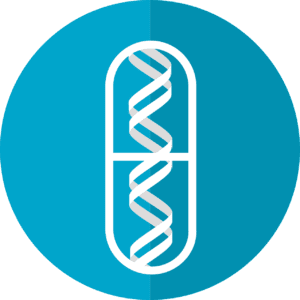Tay-Sachs Disease
What is Tay-Sachs disease?
Tay-Sachs disease is a rare inherited disorder that progressively destroys the nerves in the brain and in the spinal cord. It is a type of lysosomal storage disease, and as it progresses, the child’s body loses function and cells and tissue are damaged.What causes Tay-Sachs disease?
Tay-Sachs disease results when an enzyme that helps break down fatty substances, called gangliosides, is missing, which is caused by a mutation in the HEXA gene. As a result, these excess gangliosides build up to toxic levels in the brain, affecting the central nervous system, as well. This mutation is inherited in an autosomal recessive pattern.What are the symptoms of Tay-Sachs disease?
In the most common form of Tay-Sachs disease, a baby will start to show symptoms at around six months of age. These include:- Exaggerated startle response to sudden noises
- Listlessness
- Loss of previously acquired skills
- Diminished muscle tone (“floppy”)
- Cherry-red spots in the middle layer of the eyes
- Gradual loss of vision
- Hearing loss
- Increased muscle stiffness and eventual paralysis
- Seizures
- Dementia
How is Tay-Sachs disease diagnosed?
A Tay-Sachs disease diagnosis may be made through a clinical evaluation and blood tests that measure the levels of the HEXA gene in the body. Sometimes, Tay-Sachs disease can be diagnosed before birth based on an amniocentesis and chorionic villus sampling (CVS).What are the available treatments for Tay-Sachs disease?
There is currently no cure for Tay-Sachs disease, so treatment is currently symptomatic and supportive, such as anti-seizure medications, if necessary. However, gene therapy or enzyme replace therapy research may eventually lead to a cure or treatment that could slow the progression of the disease.Where can I find more information on Tay-Sachs disease?
Tay-Sachs Disease Articles

Azafaros Highlights New Hope for Rare Lysosomal Diseases
Kathy Devanny
September 12, 2024
Read More »


Daughter with Tay-Sachs Disease Won’t Live to See Six, Family Shares
Jessica Lynn
March 15, 2023
Read More »


Results From the First Clinical Trial for Tay-Sachs Disease Look Promising
Rose Duesterwald
February 24, 2022
Read More »

Interview: Living a Full and Filling Life with Late-Onset Tay-Sachs (LOTS) Pt. 2
Jessica Lynn
February 22, 2022
Read More »

Interview: Living a Full and Filling Life with Late-Onset Tay-Sachs (LOTS) Pt. 1
Jessica Lynn
February 21, 2022
Read More »

PLX-200 Earns Orphan Drug Designation for GM2 Gangliosidoses
Jessica Lynn
September 24, 2021
Read More »




